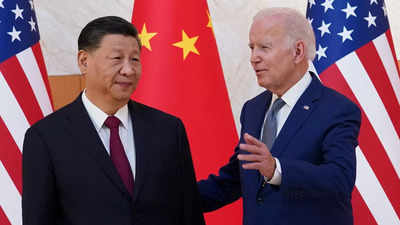Introduction
The intersection of technology and global trade has become a focal point, with Biden’s administration ushering in a new era marked by stringent measures. Understanding the nuances of this policy requires a comprehensive examination, considering national security concerns, economic imperatives, and the broader implications for U.S.-China relations.
Backdrop of Biden’s Tough Tech Trade Policy
To grasp the significance of the current policy, it’s essential to trace the historical trajectory of U.S.-China tech trade. The Biden administration’s approach has roots in past administrations but reflects a distinct departure in response to the evolving geopolitical landscape.
Objectives Driving the Tough Stance
At the heart of https://techtrader.xyz/tough tech trade policy lie crucial objectives. National security takes center stage, with concerns over the potential misuse of advanced technologies. Additionally, there’s a concerted effort to safeguard American intellectual property and address perceived imbalances in the economic relationship between the two superpowers.
Key Components of the Tough Tech Trade Policy
The policy involves a strategic selection of restricted technologies, products, and entities. Understanding these components is essential for businesses and policymakers alike, as they navigate the intricate web of compliance and enforcement mechanisms.
Impact on U.S. Tech Enterprises
The stringent measures have left an indelible mark on American tech companies. From semiconductor manufacturers to software developers, businesses are grappling with the challenges posed by restricted exports and the need for heightened cybersecurity measures.
Global Ramifications
As the U.S. takes a tough stance, the global repercussions are felt across continents. Other nations recalibrate their tech trade strategies, prompting a reevaluation of international partnerships and alliances. The ripple effect extends to supply chains, market dynamics, and collaborative research efforts.
China’s Response to the Tough Tech Trade Policy
China, a major player in the global tech landscape, hasn’t remained passive in the face of these restrictions. The response from Beijing ranges from diplomatic protests to strategic countermeasures, illustrating the delicate dance between the two economic giants.
Economic Dynamics and Challenges
While the tough tech trade policy aims to bolster U.S. industries, it introduces complexities in the economic landscape. Analysts grapple with predicting the long-term effects on GDP, employment, and the overall competitiveness of American businesses.
Industry Perspectives on the Tough Tech Trade Stance
Insights from tech industry leaders provide a real-world perspective on the ground. Interviews with CEOs, CTOs, and industry analysts shed light on how businesses are adapting, innovating, and strategizing to navigate the challenges.
Public Opinion and Political Dynamics
In a democratic society, public opinion plays a pivotal role. The tough tech trade stance sparks debates and discussions, with political leaders expressing varying views. Understanding how the public perceives and engages with these policies is crucial for a holistic perspective.
Challenges, Controversies, and Unintended Consequences
No policy is without its challenges and controversies. Stakeholders voice concerns about potential unintended consequences, fairness, and the need for continuous evaluation and adaptation in response to emerging challenges.
Adaptation and Innovation Amidst Tough Restrictions
Despite the challenges, the tech industry is a hotbed of innovation. Companies are adapting, finding creative solutions, and investing in research and development to stay competitive in the face of stringent trade restrictions.
Looking Ahead: Future Scenarios
Speculating on the future of U.S.-China tech trade relations is a complex task. Scenarios range from diplomatic resolutions to potential escalations, and the technological landscape continues to evolve, presenting new challenges and opportunities.
Conclusion
In conclusion, Biden’s tough tech trade policy marks a pivotal moment in international relations, shaping the trajectory of U.S.-China tech trade. Balancing national security, economic interests, and global partnerships, the policy underscores the complexities inherent in the interconnected world of technology and trade.






